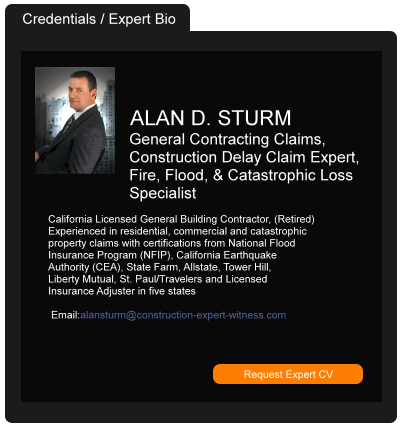ETF Bulls Bet Spring Will Thaw the U.S. Housing Market
April 08, 2014 —
Corinne Gretler – BloombergBuild it and they will come, if it’s not too chilly.
Traders have turned bullish on a security that tracks home construction companies, appliance makers and furniture retailers as spring finally ends the harsh winter.
As the SPDR S&P Homebuilders ETF (XHB) heads for its first weekly gain since February, investors are buying options betting that the rebound will keep going. The cost of bullish contracts has risen to the highest versus bearish ones in 2 ½ years. The ETF has gained 2.2 percent this week.
The exchange-traded fund of companies such as Ryland Group Inc., Whirlpool Corp. and Home Depot Inc. has rebounded 8 percent after reaching its lowest level this year on Feb. 3 as investors attribute weakness in the housing market to winter weather. Between December and February, snow covered 1.42 million square miles of the continental U.S., the 10th-largest snow cover in records going back to 1966, according to the National Climatic Data Center.
Read the court decisionRead the full story...Reprinted courtesy of
Corinne Gretler, BloombergMs. Gretler may be contacted at
cgretler1@bloomberg.net
Contractor Gets Benched After Failing to Pay Jury Fees
April 11, 2022 —
Garret Murai - California Construction Law BlogTrial by jury is a fundamental right under the U.S. and California Constitutions. However, to avail yourself of this right, you not only have to declare that in advance that you intend to try your case to a jury but post jury fees as well. In TriCoast Builders, Inc. v. Fonnegra, a contractor who failed to timely post jury fees, discovered on the day of trial that it waived the right to insist on a jury trial when the defendant pulled an “I gotcha” and waived his right to a jury trial.
The TriCoast Case
In May 2014, Nathaniel Fonnegra house was damaged by fire. The following month, Fonnegra entered into a construction contract with TriCoast Builders, Inc. to repair the property. Dissatisfied with the work, Fonnegra terminated the contract, and TriCoast in turn filed a complaint against Fonnegra for unpaid work.
Read the court decisionRead the full story...Reprinted courtesy of
Garret Murai, Nomos LLPMr. Murai may be contacted at
gmurai@nomosllp.com
Appellate Division Confirms Summary Judgment in Favor of Property Owners in Action Alleging Labor Law Violations
June 19, 2023 —
Lisa M. Rolle - Traub LiebermanIn this action brought before the State of New York, Appellate Division, Traub Lieberman Partner Lisa Rolle represented Defendant Property Owners in an appeal asserting Labor Law violations. In the underlying case, Plaintiff allegedly was injured while working on a construction project at a property owned by the Defendants, alleging violations of Labor Law §§240(1) and 241(6). The Defendants moved for summary judgment dismissing the causes of action alleging violations of Labor Law §§ 240(1) and 241(6), arguing that they could not be held liable for such violations due to the exemption set forth in those statutes for owners of one- and two-family dwellings. The Supreme Court of the State of New York granted the motion for summary judgment, and the Plaintiffs appealed.
Read the court decisionRead the full story...Reprinted courtesy of
Lisa M. Rolle, Traub LiebermanMs. Rolle may be contacted at
lrolle@tlsslaw.com
Florida Governor Signs Construction Defect Amendments into Law
September 17, 2015 —
Beverley BevenFlorez-CDJ STAFFAccording to Jeffrey Gilbert and Anaysa Gallardo Stutzman of Cozen O’Connor, Rick Scott, governor of Florida, signed HB 87 into law, which “amends the notice and opportunity to cure provisions of Chapter 558, Florida’s Construction Defect Statute.” The amendments go into effect October first.
HB 87 requires “property owners to provide concrete details of the alleged defects.” Gilbert and Stutzman claimed, “Overall, these amendments seek to further the intended public policy purpose of Chapter 558, which is to provide an alternative dispute resolution mechanism and result in fewer lawsuits and lower litigation costs incurred by parties involved in construction defect matters.”
Read the court decisionRead the full story...Reprinted courtesy of
Construction Reaches Half-Way Point on San Diego's $2.1 Billion Mid-Coast Trolley
May 06, 2019 —
Greg Aragon - Engineering News-RecordProject officials for the $2.1-billion Mid-Coast Trolley in San Diego recently celebrated the halfway point of construction. The event was held at the construction staging yard near the Voigt Drive Trolley station, where workers gather for their morning briefings.
Read the court decisionRead the full story...Reprinted courtesy of
Greg Aragon, ENRENR may be contacted at
ENR.com@bnpmedia.com
Ways of Evaluating Property Damage Claims in Various Contexts
February 18, 2020 —
Bremer Whyte Brown & O'Meara LLPPotential damages in a lawsuit may come in many forms depending on the facts of the case. Common damages include medical expenses, loss of earnings, property loss, physical pain, and mental suffering. Of the many damages Plaintiffs may claim, one of the most prevalent and recognizable is property damage. This article briefly discusses these types of damages which fall under two major categories – Real Property and Personal Property.
Broadly speaking, “real property” means land, and “personal property” refers to all other objects or rights that may be owned. Ballentine’s Law Dictionary defines “real property” as: “Such things as are permanent, fixed, and immovable; lands, tenements, and hereditaments of all kinds, which are not annexed to the person or cannot be moved from the place in which they subsist. . . .” (Ballentine’s Law Dict. (3d ed. 2010).) “Personal property” is defined as: “Money, goods, and movable chattels . . . . All objects and rights which are capable of ownership
except freehold estates in land, and incorporeal hereditaments issuing thereout, or exercisable within the same.” (Id. (emphasis added).)
Real Property
Real property may be damaged or “harmed” through trespass, permanent nuisance, or other tortious conduct. The general rule is that Plaintiffs may recover the lesser of the two following losses: (1) the decrease in the real property’s fair market value; or (2) the cost to repair the damage and restore the real property to its pre-trespass condition plus the value of any lost use. (Kelly v. CB&I Constructors, Inc.) However, an exception to this general rule may be made if a Plaintiff has a personal reason to restore the real property to its former condition, sometimes called the “personal reason” exception. In such cases, a Plaintiff may recover the restoration costs even if the costs are greater than the decrease in the real property’s value, though the restoration cost must still be “reasonable” in light of the value of the real property before the injury and the actual damage sustained.
Read the court decisionRead the full story...Reprinted courtesy of
Bremer Whyte Brown & O'Meara LLP
Minnesota Addresses How Its Construction Statute of Repose Applies to Condominiums
April 27, 2020 —
William L. Doerler - The Subrogation StrategistCourts often struggle with the question of when the statute of repose starts to run for construction projects that involve multiple buildings or phases. In Village Lofts at St. Anthony Falls Ass’n v. Housing Partners III-Lofts, LLC, 937 N.W.2d 430 (Minn. 2020) (Village Lofts), the Supreme Court of Minnesota addressed how Minnesota’s 10-year statute of repose, Minn. Stat. § 541.051, applies to claims arising from the construction of a condominium complex. The court held that the statute of repose begins to run at different times for: a) statutory residential warranty claims brought pursuant to Minn. Stat. §§ 327A.01 to 327A.08, et. seq.; and b) common law claims arising out of the defective and unsafe condition of the condominium buildings.
As stated in Village Lofts, Housing Partners III-Lofts, LLC (Housing Partners) developed the Village Lofts at St. Anthony Falls, a condominium complex consisting of Building A and Building B. Housing Partners retained Kraus-Anderson Construction Company (Kraus-Anderson) as the general contractor for Building A. Kraus-Anderson retained Elness Sweeney Graham Architects, Inc. (ESG), Doody Mechanical, Inc. (Doody) and Kenneth S. Kendle, P.E. (Kendle) to work on Building A. In September 2002, the City of Minneapolis (City) issued a partial certificate of occupancy (CO) for Building A, including the building’s public spaces. On October 4, 2002, Housing Partners filed the declaration creating the Village Lofts at St. Anthony Falls condominium, to be operated by Village Lofts at St. Anthony Association (Village Lofts Association). On October 10, 2002, Housing Partners sold the first unit in Building A and in November of 2003, the City issued a CO for the entire building, excluding two units.
Read the court decisionRead the full story...Reprinted courtesy of
William L. Doerler, White and Williams LLPMr. Doerler may be contacted at
doerlerw@whiteandwilliams.com
Real Estate & Construction News Round-Up (10/06/21)
October 18, 2021 —
Pillsbury's Construction & Real Estate Law Team - Gravel2Gavel Construction & Real Estate Law BlogReal estate tokenization and smart home technology continue to grow, negotiations surrounding the bipartisan infrastructure bill stall its passing, artificial intelligence is poised to transform the construction industry, and more.
- Contra Global leverages real estate tokenization, the process of creating tokens on the Blockchain and assigning them to real estate properties that already exist or are under construction, to remove traditionally high barriers to investment entry as well as intermediary fees in the industry. (Navid Ladani, Yahoo Finance)
- Following the 2-week closure of the construction industry after protests turned violent over vaccine mandates, the Victorian government announced its reopening with up to 25 percent capacity of workers and new vaccination rules. (ABC News)
- Though the construction industry has traditionally relied heavily on human experience and expertise to complete projects, the industry is rapidly adopting digital solutions to adapt to chronic labor shortages, the need for sustainable solutions, and supply-chain disruptions. (Tom Taulli, Forbes)
Read the court decisionRead the full story...Reprinted courtesy of
Pillsbury's Construction & Real Estate Law Team


































































